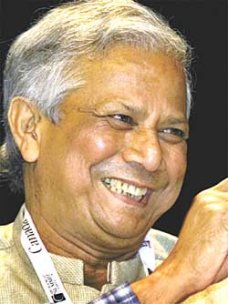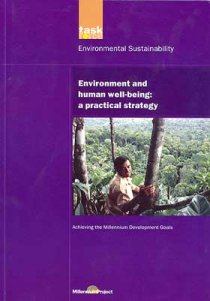Optimistic Listmaker
Common Wealth, Economics for a Crowded Planet, Jeffrey D. Sachs, 2008
We last met Jeffrey Sachs in Shock Doctrine and the PBS series Commanding Heights where he gained notoriety for advising nations throughout Latin America, Eastern Europe, and the former Soviet Union in the largest transfers of wealth to private and often foreign hands in human history. From these introductions, we would naturally associate Sachs with the Chicago School and neo-liberal movements. So it is refreshing to see Sachs here as Director of the Earth Institute at Columbia University (alma-mater of Kissinger and Greenspan) advocating massive and coordinated government programs to tackle the monumental problems of global warming, environmental damage and species extinction, population control education food supply health care, poverty, clean fresh water supply, sustainable energy supply.
He is very aware of the wrong footed long term foreign policy of the United States, referencing Legacy of Ashes and adopting the term Blowback from Chalmers Johnson. He references Jared Diamond and like Diamond, Sachs is an optimist, and like Diamond, the litany of massive problems addressed is enough to depress anyone. Where does all this optimism come from?
Sachs is very smart, becoming the youngest Professor in Harvard history but the surprise in this book is how well and clearly he organizes and writes. He makes an excellent case that big changes can be made with modest (relative to the U.S. defense budget) investment, using existing technologies and proven techniques of implementation. Imagine what would happen if serious investments were made in new technologies.
Some examples and highlights. Two human activities that provide little income to the participants but have a devastating impact on the environment are deforestation and fishing (particularly bottom net fishing). If those involved were paid modest sums not to cut trees or fish, the improvements in the environment would have economic value in huge multiples of the amount spent.
Preindustrial CO2 levels in the atmosphere were 280 ppm and are 380 ppm today. The international community have set a goal of stabilizing CO2 at no higher than 560 ppm. Two changes alone; sequestering CO2 emissions from power and industrial plants, and converting the world’s auto fleet to hybrid-plug-in technology would stabilize CO2 at 488 ppm by 2050.
In addition to extensive water world wide pollution, global climate change is having a dramatic impact on water through melting glaciers and ice caps and changing rain patterns. Ground water is being rapidly depleted and water problems will lead to conflicts since water requirements of many nations originate in other nations, for example, Bangladesh which gets most of its water from India.
We know how to control population growth with governmental educational and health support systems. Education, health, and ending poverty will bring population stability to all countries of the world. Poverty and population growth lead to conflicts, wars, and genocide. Spending money to end poverty, improve health and education will improve national security for the U.S. that defense expenditures cannot. Defense moneys need to be diverted to these positive activities. Sachs highlights the relationships between large percentages of young men in poor countries with high unemployment and food shortages and violence. He specifically points to Afghanistan and Darfur as places with exceptionally high percentages of young men where military solutions are impossible without addressing the fundamental problem of poverty.
He doesn’t address one troubling trend, in China, where the cultural preference for boy babies is leading to an entire generation where boys vastly outnumber girls. I guess he hopes that China’s continued economic growth will somehow absorb this problem without leading to unusual violence.
Sachs explicitly rejects the Invisible Hand of Chicago School fantasy. On the contrary, Sachs delineates the six kind of essential governmental intervention:
The first is help for the destitute …so that the poor can stay alive, meet basic needs, and step onto the ladder of development… The second is the public provision of key infrastructure (roads, ports, and airports, power, telecommunications, and broadband connectivity, all of which are required by the private sector in order to flourish) as well as other public goods such as infectious disease control and environmental management… The third is the provision of a sound business environment, including monetary stability, protection of property rights, contract enforcement, and openness to international trade. The fourth is the provision of social insurance, to ensure that all parts of the population can maintain their economic security and well-being in the face of inevitable economic dislocations. The fifth is the promotion and dissemination of modern science and technology…. The sixth is proper stewardship of the natural environment.
Sachs was director of the UN Millennium Project under Kofi Annan. In this program, 78 villages across Africa were selected to demonstrate that coordinated efforts in education, health care, agriculture, and infrastructure can lift villages out of poverty and into sustainable economic growth. Each village of approximately 5,000 population were allocated aid totaling $120 per person of which external donors provided $60, the host government provided $30, $10 in kind (labor) from villagers, and $20 from other partners such as NGOs. The success of these carefully coordinated and monitored programs show how effective and inexpensive it is to attack the problems of poverty. Sachs appeals to the US to divert even a small portion of its defense budget, say, from nuclear arms development, into a global poverty program. Military solutions clearly don’t work to provide security, so why not solve the world wide poverty problem and see what the impact would be on security? Currently, the US spends 2 days of military budget per year equivalent on health and poverty programs. Sachs estimates the worldwide required worldwide annual budget to implement Millennium Projects everywhere at $245 Billion or 0.7 % of total developed world income. The U.S. currently spends more than twice this total amount on defense alone.
Sachs attacks neo-liberal spread falsehoods that Western Europe, Japan, and the Asian Tigers were able to achieve their remarkable economic growth without foreign aid. Starting with the WWII Marshall Plan, all currently successful economies were put on the road to sustainability through massive foreign aid. And the money spent has been returned many fold through the resulting successes. It worked well in the past, the Millennium Projects has demonstrated that coordinated efforts will work in the poorest villages on earth, so why aren’t the developed nations rushing to offer assistance?
Sachs demonstrates that social welfare economies such as those in Scandinavia, have been even more successful economically, with higher standards of living, higher growth, and higher R&D investment than free-market economies like the United States. They accomplish all this and still are able to provide a social network of protection, universal health care, retirement security, excellent education, and high employment with the government acting as employer of last result hiring people to serve as care givers, child care providers, and other essential social tasks that are not provided under free-market economies. To the critics that point out that Scandinavia has a largely homogeneous population so people are caring for their own kind, Sachs reminds us that these same countries are also the largest providers of foreign poverty aid in the world. Their populations seem to have no trouble caring for people of very different cultures and ethnicity worldwide. In other words, the argument that social welfare somehow interferes with economic performance and growth is simply wrong.
Muhammad Yunis Receives Nobel Prize 
Finally Sachs gives some modern philanthropists and NGOs their due. He points out that the Rockefeller Foundation was largely responsible for the Green Revolution that increased agricultural food production in India starting in the 1960s. He praises Muhammad Yunis for inventing micro finance and founding the Grameen Bank to give very small loans to women without a credit history so they can start small scale businesses. This community based lending has proven amazingly able to life people and communities out of poverty and into sustainable growth. The idea is not spreading throughout the world. He gives praise to the Gates Foundation and to the donations from Warren Buffet which allows the foundation to invest in the development of products for health care, telecommunications, and other areas needed by poor places where the free market would not be interested. He asks what if the 950 world billionaires pooled their $3.5 Trillion like Gates and Buffet? At 5% yield, that sum would produce $1.75 Billion annually, enough to make a huge dent in world poverty. Dream on. He even manages to find a good word for a few pharmaceutical companies, like Merck, that have been persuaded to stratify their markets so they can offer the newest drugs at cost to the poorest places on earth while maintaining their prices to the developed world. This has now evolved to the point where fragile but growing places like Brazil can be offered prices somewhere between cost and high developed prices. He uses this as evidence that even greedy corporate managers can be induced to do the right thing for the poor. The jury is still out on that one, but give Sachs credit for being the eternal optimist.




